Communication for Development
In the ‘Ground Zero’ piece, we talk to four organizations from across the country. We share with you their insights gained from doing development communication over the years.

Development communication aims to enable stakeholders to challenge deep rooted stigma against certain groups and encourage adoption of positive norms and behaviors. The organizations we spoke with leverage development communication to capacitate stakeholders to meaningfully engage with their world and work towards social change by altering attitudes and enabling learning. These partners collaborate with stakeholders across the board – individuals, communities and institutions. They also use communication to garner more supporters and resources for their cause.
Latika Roy Foundation
Established in 1994, Latika Roy Foundation (LRF) is a voluntary organization based in Dehradun, India, working with children and adults with developmental disabilities. As a resource center for people with special needs, they provide early intervention services, livelihoods development, education, training and awareness.
LRF sees development communication as one way to encourage positive norms and behavior that accords respect and recognizes the agency of people with disabilities.
Jo Chopra, Executive Director of LRF, shared that she grew up in a progressive family. Yet she admits that it was only after she had adopted Moy Moy, a girl with special needs and became a disability professional that she started reflecting on how typical people communicate about people with disabilities.
Jo shared that at LRF they are constantly refining how the organization communicates about people with disabilities. Jo said, “In our communication, we focus on ensuring that disabled people are portrayed as people with agency, and we constantly remind ourselves that it is not ours to give, it’s already theirs.”
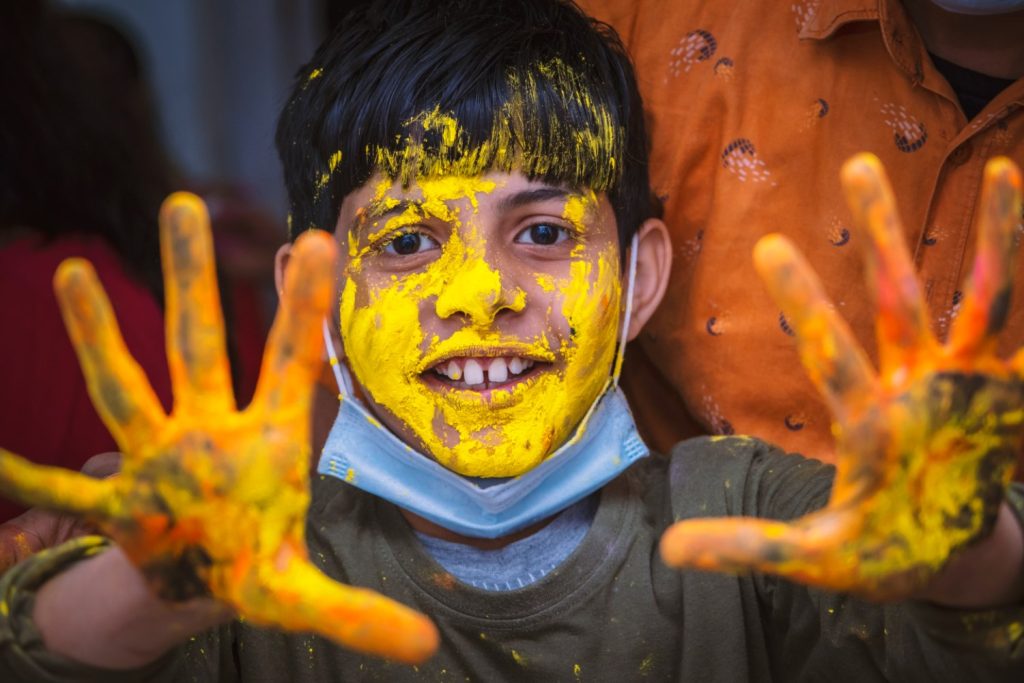
LRF tries to not solely focus on the disability but on the individual, seeing disability as a feature, a part of who someone is, but not the sole defining factor. Their team communicates in a way that does not necessarily refer to someone’s disability. The team encourages children and people with disabilities to talk about their interests and share their opinions. The LRF team also understands that some disabled people prefer to highlight their disability.
She shared, “I find that wherever there is a perceived difference, people feel it’s important to highlight it. So if you have a friend who’s a different religion or race or gender identity to you, you always want to somehow bring it into the conversation. Same with disability. As part of our development communication, we keep challenging people to ask themselves: what are these versions of ‘normality’ that I’ve adopted? And we start with ourselves, because we can only change ourselves.”
When communicating about rights, LRF stresses that they are not doing anybody any favors. “For example, the word inclusion. It’s a passive word which implies that one side has the power to include or not. Disabled people, on the other hand, ask: “Who are you to include us? We’re already here.” I think when we take those words we think we’ve agreed on, when we pull them out and argue about them, we have to pause and question our assumptions. That is what this communication is all about.”
Jo highlighted that the way in which we communicate is evidence of our own limited understanding of disabilities. Terms like symptoms, red flags, challenging behavior need to be reexamined in the light of what we now know about ableism. In typical child development, for example, parents and teachers often speak of temper tantrums, a well accepted term for those emotional outbursts when 2 and 3-year-olds are beginning to push back against authority, especially their parents’ control.
When we call it a temper tantrum, Jo says, we give it a negative spin. Now that child development is better understood, we have realized how important it is for a child’s growth and future independence that they assert themselves, separate from their parents and become their own persons. However, we also realize how hard it is for very young children to cope with all the stress that entails. When we change the words, we start to change the way we think about it.
Since 1997, the team has also released an annual calendar. Jo noted that in pictures, children with disabilities are often shown in wheelchairs, looking glum and pitiful. In the LRF calendar, the photographs are upbeat, funny and interesting, a deliberate pushback against the prevailing stereotypes people have about disabled kids.
Jo shared, “We consciously decided that we will not make our kids look pathetic to get people to donate or understand our work. All our photographs reflect the reality we live with and that has been our watchword for 30 years. I think one of our big contributions to disability in India is to give it an authentic, positive look.”
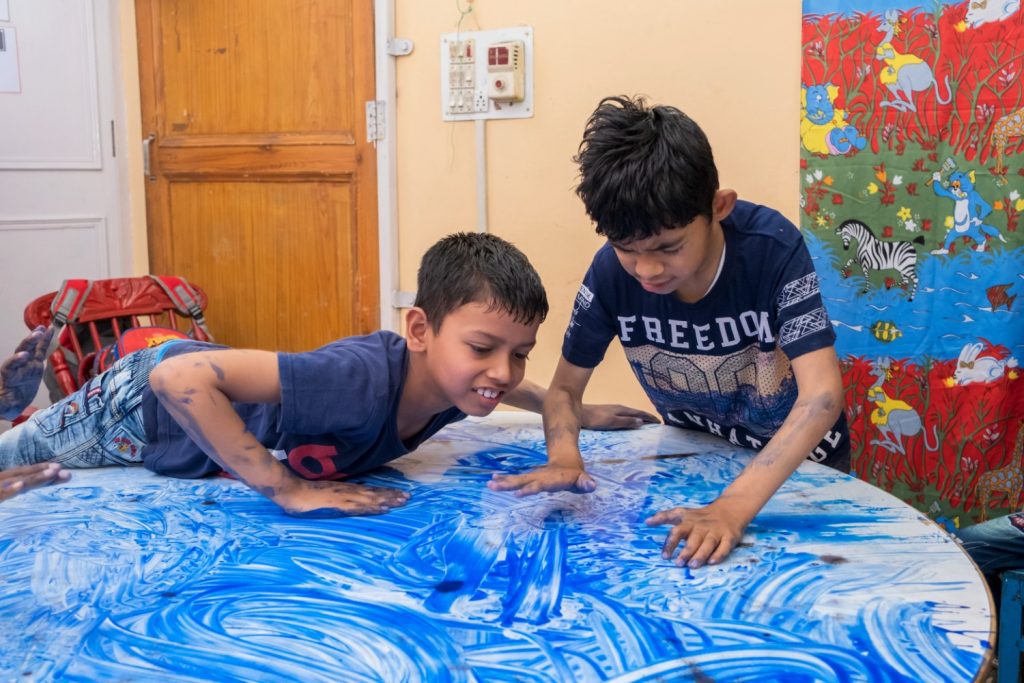
Jo is a writer and communicator, and does a lot of public speaking. For years, she has also been writing for a blog hosted on the organization’s website. Her blog posts cover a myriad of themes such as reflections and insights from her life and as a practitioner in the field of disabilities.
The LRF team sees development communication as a means to question our deeply internalized stereotypes. It aims to educate people to communicate in a manner that recognizes and respects the agency of people and children with disabilities.
Apni Shala Foundation
Apni Shala works with children and educators to build social and emotional skills and to strengthen educational institutions for promotive and preventive mental health. They collaborate with the government and low-fee schools.
Rohit, CEO of Apni Shala shares, “Two very critical aspects of social-emotional learning (SEL) is to, one, create opportunities for students to learn and practice social emotional competencies, and two, for the ecosystem of stakeholders to become caring and compassionate for which it is very critical that they understand what this means.”
The Apni Shala team is aware that the vocabulary surrounding SEL is complex and may discourage people from understanding the cause. They try to consciously use terms that are used by the stakeholders themselves. For instance, when the Apni Shala facilitators start engaging with educators and caregivers on what SEL is, they do not straight away jump in with terminologies.
Rohit adds, “Our facilitators try to understand what their level of understanding is. They consciously try to not bring in terms that confuse them. In some schools, we see educators are already familiar with value education or life-skills education. We try to use that thread to start discussing SEL. Similarly, with parents, we check with them what are the problems their child faces in school. For instance, if someone says bullying, then we try asking them the impact of bullying among students and how we can build social-emotional competencies in children.”
Rohit also added that they believe their understanding of SEL is growing and evolving over the years. The Apni Shala team is inspired from the constructivist theory where learners are considered to be active participants in their learning journeys and knowledge is continuously constructed based on experiences. It is believed that new ideas get incorporated with their prior knowledge. The team, thus, sees that their learning, vocabulary and communication on SEL thereby cannot be static.
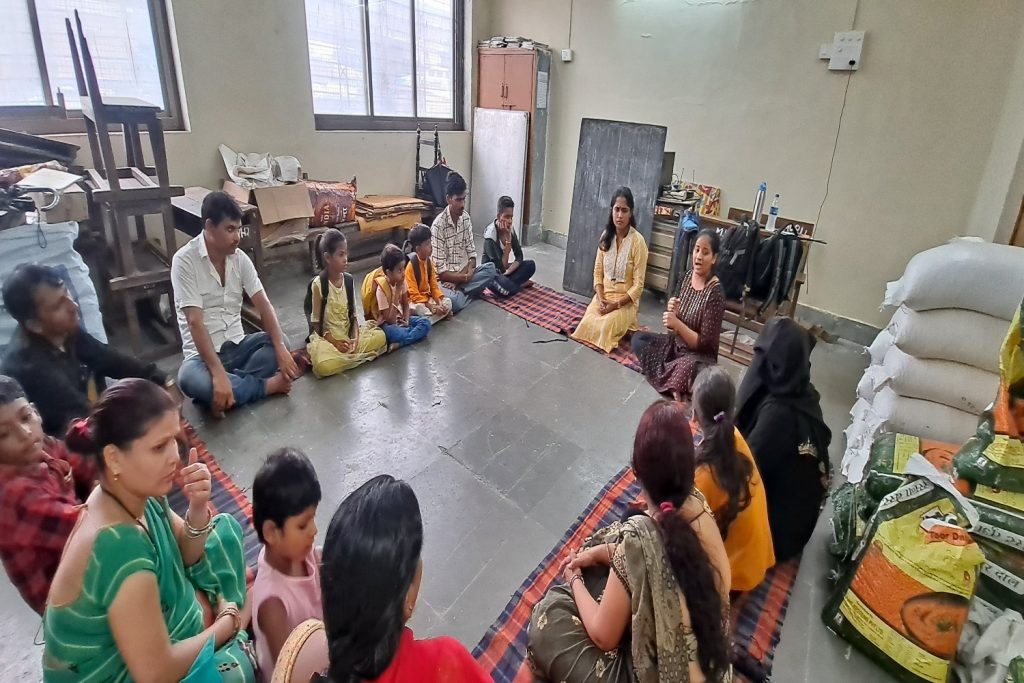
The Apni Shala team sees that there is a dearth of resource material on SEL. They produce resources informed by practice. These include articles, blogs, videos, etc. to advocate for SEL and SEL-integrated education by engaging with the audience online. The team believes that it also gives them an avenue to reflect on varied aspects of their work and learnings at Apni Shala.
Team members are encouraged to work on the content. There are guidelines laid down to help each contributor navigate conceptualization of theme, development of content and the process of multi-staged reviewing. The team reviews if the content, language and narrative styles are aligned with their communications guidelines, values of mindfulness, diversity, equity and inclusion, and constructivist learning theory.
The team, in streamlining their communication efforts, have also adopted brand guidelines. These guidelines are the set of rules that define the overall look of the brand. They help build a brand identity that the audience can recognize across all platforms. It outlines everything from typography and color palette to the tone of voice and mission statement. The Apni Shala team strategically uses development communication to empower stakeholders to engage with children and understand SEL.
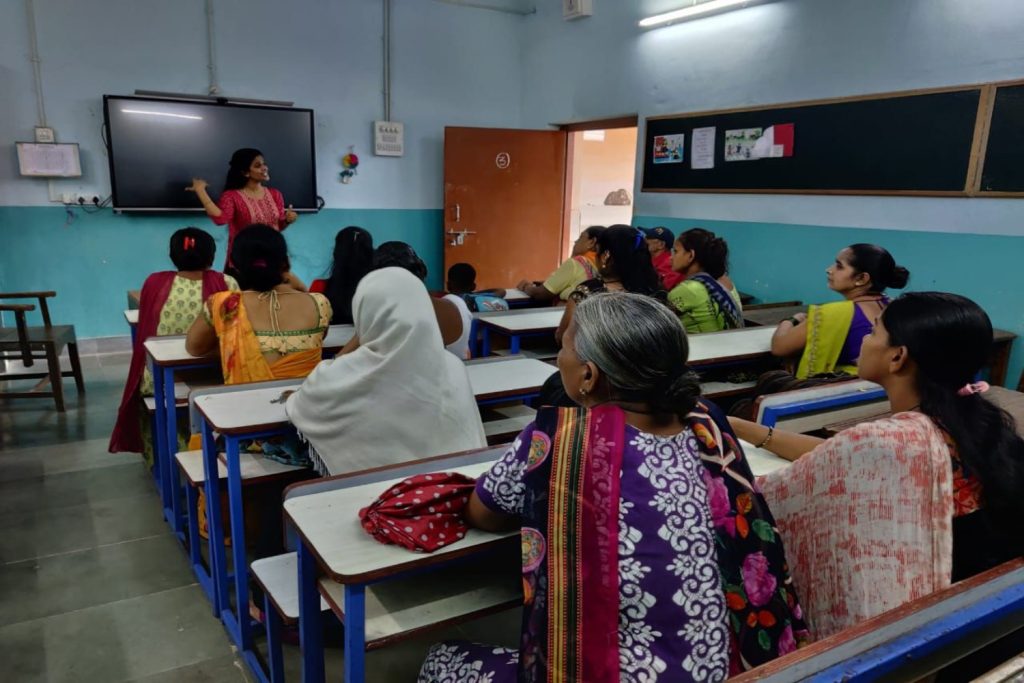
Makkala Jagriti
Set up in 2003, Makkala Jagriti (MJ) strives to create safe and friendly spaces for children from marginalized communities facilitating opportunities for their holistic development. The organization has focused programs for early childhood care and education, primary school children and youth.
MJ has been facilitating children and youth to overcome their socio-economic roadblocks and embrace their true potential by creating conducive learning environments and using a holistic approach. They work with public institutions such as anganwadis, government schools and government children’s homes. They commit to involving key stakeholders such as parents, teachers, department functionaries and community members to improve learning opportunities for children.
Sunayana Chatrapathy, CEO of Makkala Jagriti, shared that for many years, the external communications strategy of MJ was neglected. She said, “We realized that a lot of people asked us how come we have been working in the space for 20 years and they had never heard about us. It is because we did not spend time on external communications and building visibility. We realized that it is a disservice to our purpose itself, if we are not talking about our work. Since we stand for building a social movement and getting more people involved towards that cause, it is important that we talk about our purpose and work to the world.”
The team follows an ecosystem approach across all programs. It works with all the stakeholders around the child. These include parents, communities, teachers, and government functionaries. Similarly in their communication strategy, MJ focuses on providing information about their programs, vision, purpose, etc. to all the relevant stakeholders.
Sunayana shared that in their communication with parents, they focus on it being non-threatening and dialogic. Sunayana shared, “In communication with parents, there can be a tendency to go with an attitude that I am here to tell you something or to often talk them down. I think Makkala Jagriti’s success so far has been because of the non-threatening approach we follow, where the stakeholders are made to feel equal. Our approach to communication is embedded in the principles we follow for our programs.”
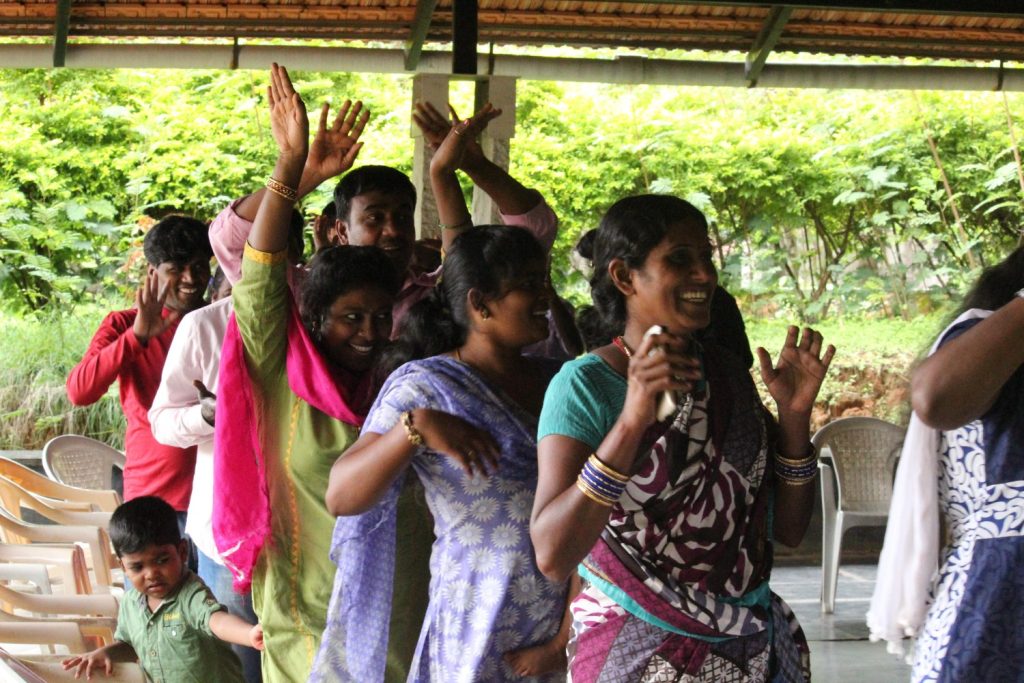
The MJ team, through WhatsApp groups, remains in close contact with parents and teachers. With other stakeholders, it periodically shares reports for updates.
In their communication, the focus is also on advocating the practices and approaches that they believe are working well on the ground. Sunayana added that “Sometimes it takes a turn of advocacy where we are trying to advocate for an aspect of something, such as the importance of teacher training in early childhood care and education. In our communication, we will try to showcase both the impact of our own work on the ground and shed light on why the training works.”
The team also feels documentation is closely interwoven with communication. At MJ, they are constantly trying to capacitate team members to capture their insights and learnings better in different mediums such as writing or photography.
Sunayana added, “Our program director is very good at writing. He tries to mentor other team members by encouraging them to write down their reflections. He also shares his feedback when they write something.”
MJ has set up a communications team. However, Sunayana shared that it has been a challenge in finding candidates who are able to gain a nuanced understanding of the programs, be equally passionate about the cause and communicate effectively.
Despite the challenges, the MJ team has become more adept at translating their communications strategy on the ground. They have started leveraging social media channels to reach out to volunteers and donors, etc. They have revamped their website and periodically post on social media. Sunayana shared that after revamping the website, there are more people expressing interest in partnering with them and learning more about their work. They have noted that there are donors who, as a part of the due diligence process, also visit and look at all the social media channels and websites.
The MJ team sees development communication as a means to remain connected with all stakeholders. It also sees it as an important aspect of conveying about the cause and garnering support.
Ayang Trust
Since 2017, Ayang Trust has been working towards enabling quality education and dignified livelihood for marginalized communities in Majuli, a riverine island in Assam. The island is frequently ravaged by floods, and the remoteness exacerbates problems of access to quality education and healthcare.
Ayang runs a model school called the Hummingbird School. They are working towards the systemic transformation of public schools through direct interventions, and knowledge and process partnering.
For Ayang Trust, development communication primarily involves apprising communities, team members, mentors, volunteers, donors and prospective job applicants of their work, exploring avenues for collaboration and garnering resources. They periodically share updates on their social media channels and newsletter.
The team believes that it is important to engage the local communities in their communication. The updates shared on their Facebook page are often posted in Assamese, one of the languages majorly spoken by the people in the region. They have noted that the engagement from the locals on posts covering matters related to their work and status of education in Assamese has been better.
Nikita and Imkum from the Ayang team shared that being in Majuli, the remoteness of the location does not make it accessible for people to visit and gain a socio-cultural understanding of the region. In their objectives for communication, the team tries to present the lived realities of the people living here and their work with them.
Nikita added, “We believe disseminating information on the culture and traditional practices of the people is also an important part of our communication.” Through their communication, they also wish to highlight not only the challenges and complexities but the richness of cultural traditions of local tribal communities such as the Mising and the Deori.
For instance, the Ali Ai Ligang festival is celebrated with much fanfare by the Misings in February. The Ayang team, through their social media channels, have in the past shared the cultural significance of the festival and the practices people observe during the celebrations.
Nikita and Imkum from the team shared, “A major goal for us has been to encourage the creation of replicable models. Through communicating about our work, we would love it if organizations doing similar work could get ideas for projects in their own communities. When other organizations communicate about their inspiring work, we are open to learning from, and collaborating with, them. These collaborations haven’t materialized yet. But we are excited about the possibilities.”
The Ayang team shared that they add images and videos in their communication collaterals. For the team to capture images that represent their work and the people, the members need to be decently skilled.
Nikita and Imkum recounted that recently on their annual team retreat, Deekshith, one of the team members, conducted a photography session for everyone involved on how to check for the right angles, lighting, disturbances, etc. They shared that many team members have started to photograph and share documentation which is often used for their communications channels.
The Ayang team, through their social media campaigns, have been able to meaningfully convey their work and garner resources for the Hummingbird School. For instance, when the team had called for support for the school, people reached out to purchase beds for the hostel and sponsor higher education for children.
During floods, the Ayang team reached out to supporters through various channels, and they received monetary and volunteering support. Their communication has helped them garner support during difficult times.
Nikita and Imkum are optimistic about leveraging communication to share more about their work, the community and the cause. They say they will continue to experiment with their strategy and see how they can reach out to more people.
In Conclusion
Development communication serves different purposes for organizations. These include capacitating people with knowledge about their cause and encouraging positive norms and attitudes for vulnerable groups. It also helps in garnering resources for the organization’s work. This field holds numerous possibilities in making social change.


No approved comments yet. Be the first to comment!